Related Tags
Tech Talk: How to fix a Fender Classic Player Jazzmaster trem-lock
In the second dose of Michael James Adams’ new guitar tech column, he dives into the mysterious world of the Jazzmaster trem-lock.
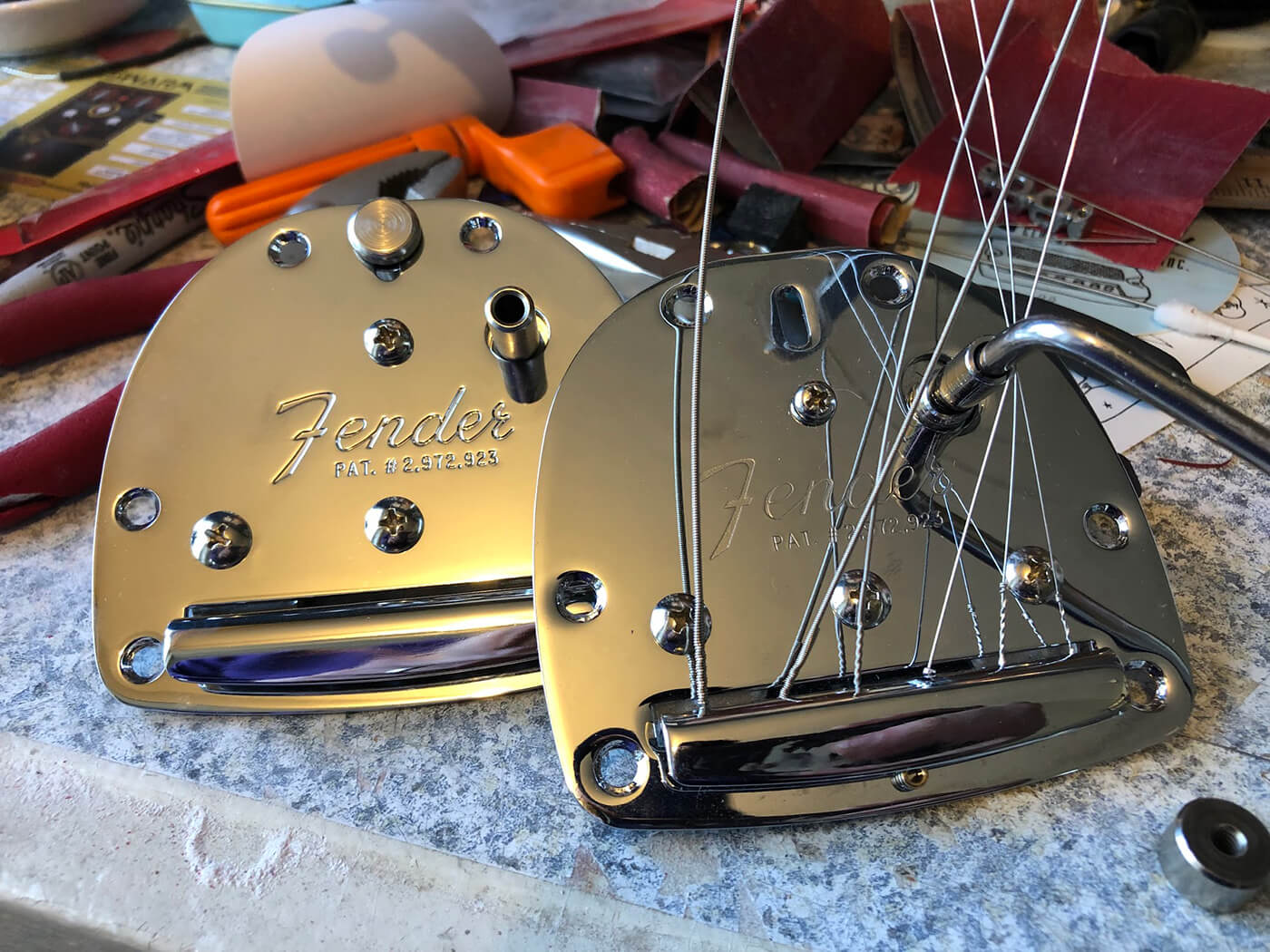
There are a few differences between the vibratos found on AVRI (left) and Classic Player models (right), most notably the screw-in arm on the CP
Confession: I’ve been pretty busy, not that I’m complaining! It’s just that between playing shows, writing articles for Guitar.com, prepping for an upcoming tour, and the ever-present minutiae of day to day life, there just hasn’t been as much time for tech-ing as there used to be. Which is sad, because of all of life’s many joys, one of my favourites is the feeling that comes with nursing guitars back to good health.
As a result, I tend to be a little more choosy with the jobs I take on, because when I do accept a gig, I want to put my whole self into the project. I really love taking my time with a repair, digesting the finer details of the player’s needs and the shortcomings of the instrument, and after all of that I come out on the other side with a deeper understanding of my craft. These things make a buzz in my brain like a battery on the tongue; learning is always its own reward.
As such, I have a few rules that help me decide which requests are beneficial for both myself and the player asking me for help. And the one rule that supersedes all others is thus: Never say no to an offset.
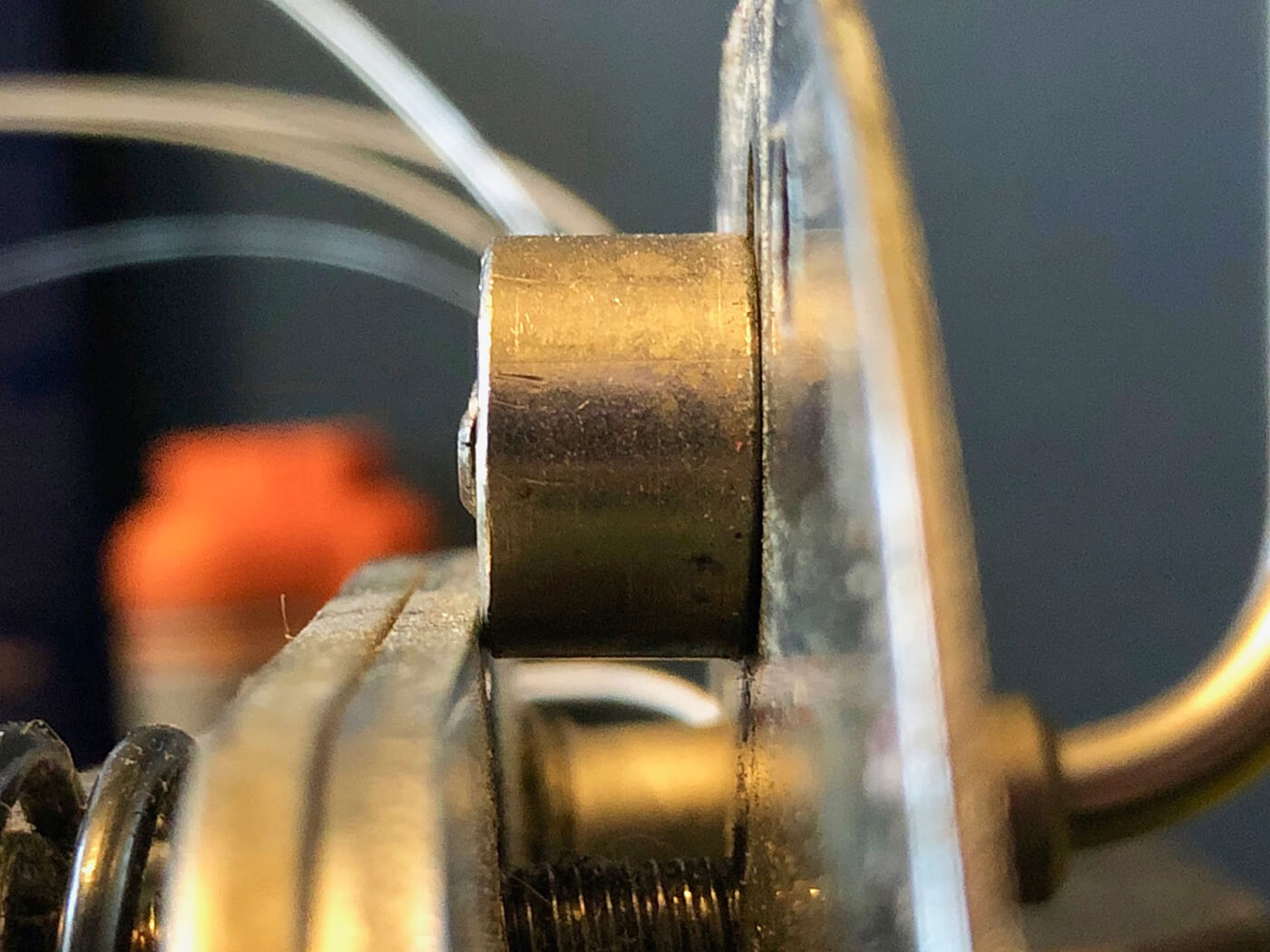
On this particular occasion, I found myself working on a recent Fender Classic Player Jazzmaster, a popular and affordable gateway drug into the offset world [recently reinvented as the Vintera ’60s Jazzmaster Modified – Ed] which takes a few liberties with the vintage formula while more or less maintaining the overall feel and sound. They’re good entry points for those curious about what offset guitars are all about, albeit with some changes – in my opinion, some are more successful than others.
For instance, I like the gently angled neck pocket, which ensures the neck always has a baseline of the requisite tilt-back, reducing the need for shims. The pickups – which are more like P-90s stuffed inside Jazzmaster covers, instead of the usual rod magnets and flat coils of more traditional instruments – have a throaty and powerful sound that can be a lot of fun for fans of more aggressive offset tones.
However, the modified vibrato positioning puts the arm in a weird spot for the way I play, and for all of the marketing buzz, that new location on the body doesn’t really change the angle of the strings all that much. Additionally, the radius of the Adjusto-Matic bridge doesn’t match that of the fingerboard, and as a result achieving a consistent-feeling setup across the ’board can be difficult. Will these minor quibbles of mine matter to anyone else? Probably not! But hey, I know what I like.
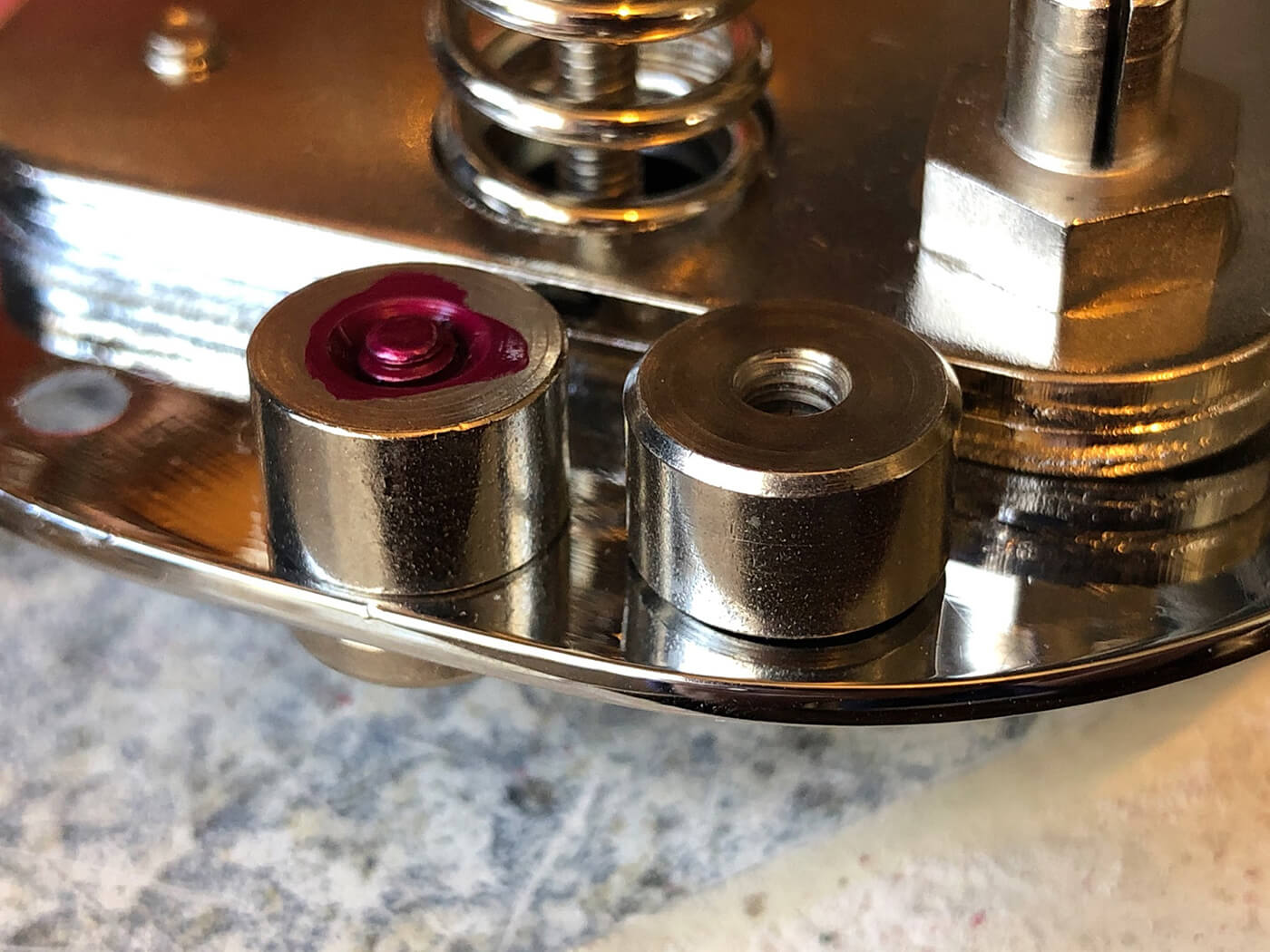
On lockdown
While discussing the issues which needed to be addressed, the owner mentioned that they were having trouble activating the trem-lock on the guitar’s import vibrato. For those unfamiliar, that little button isn’t simply for turning the guitar into a hardtail; Leo Fender’s true intention for that bit of hardware was as a mechanical memory for string tension, allowing the player to bring the guitar back in-tune in the event of a broken string.
When a string pops, the vibrato will pull sharp because string tension is reduced while that of the spring stays constant. The unit becomes unbalanced and suddenly nothing sounds right, but if you’ve got this mechanism figured out, you can simply slide the button back, which locks the string anchor plate back where it was before the break, and presto! You can finish the song perfectly on-key.
Personally, this little trick has saved me a number of times over the years. It’s a genius idea that works flawlessly, provided that it’s set up correctly. But this one just wasn’t working at all. Any time I tried to slide the slug back into position, it would just pop out again. I’d never encountered this issue before, so the only thing to do was pop the vibrato off of the body and have a look at the internals.
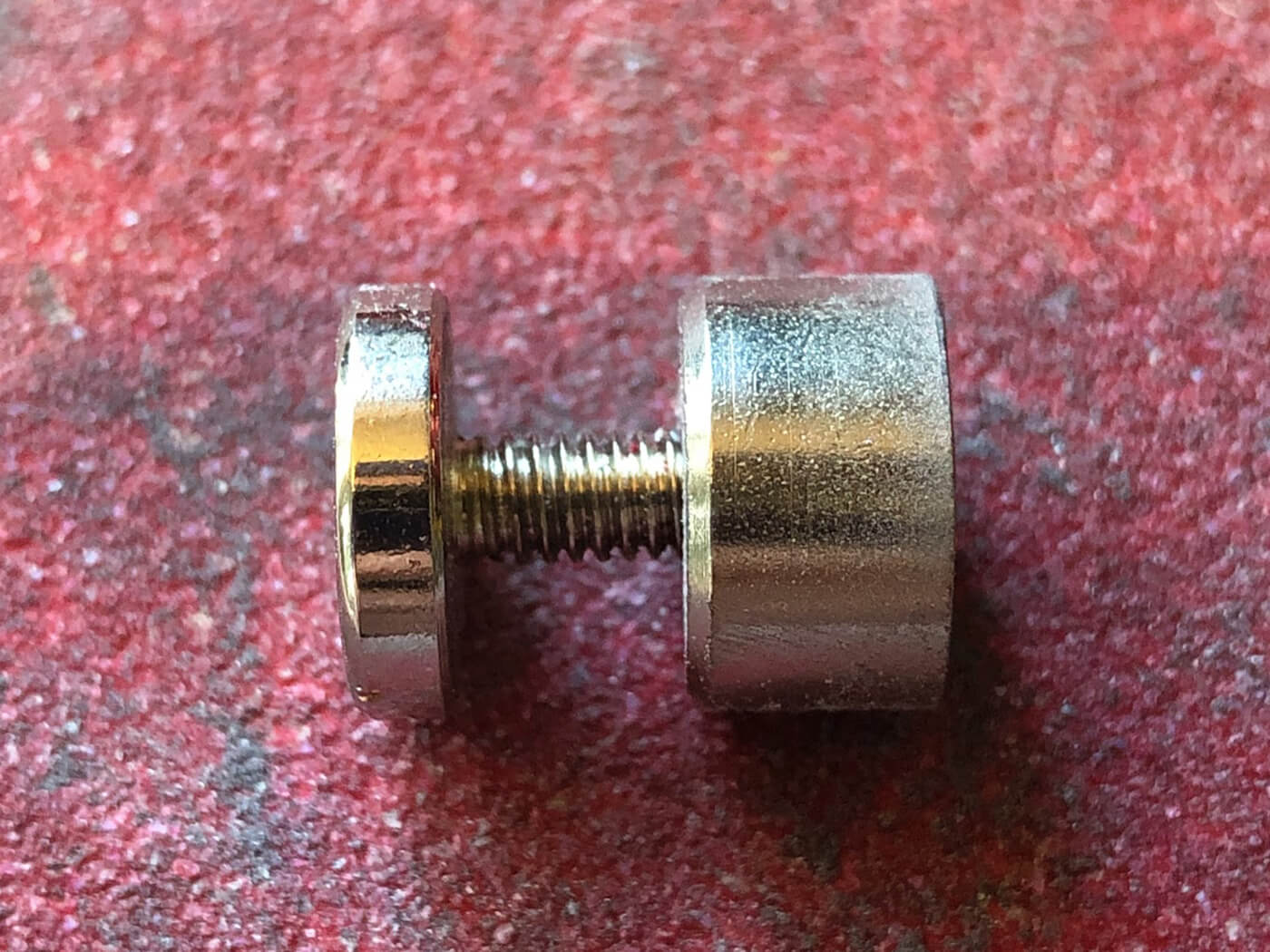
Luckily, the issue became clear almost immediately. On vintage and US reissue units, the round metal slug is flat on both sides and slides under the string anchor plate, which locks it in place. You can see from photographs that only a sliver of the plate makes contact with the slug, so having maximum surface area here is crucial.
However, on the MIM vibrato, that slug is curiously bevelled on both sides. My guess is that a bevel on one side makes it easier to move the thing around (less friction) and doing so to both sides is a manufacturing choice – no extra time wasted figuring out which side is which.
With the bevel, that crucial amount of surface area is greatly reduced, and the slug has a much greater chance of popping out of alignment. If you plan on using the thing, this simply won’t do.
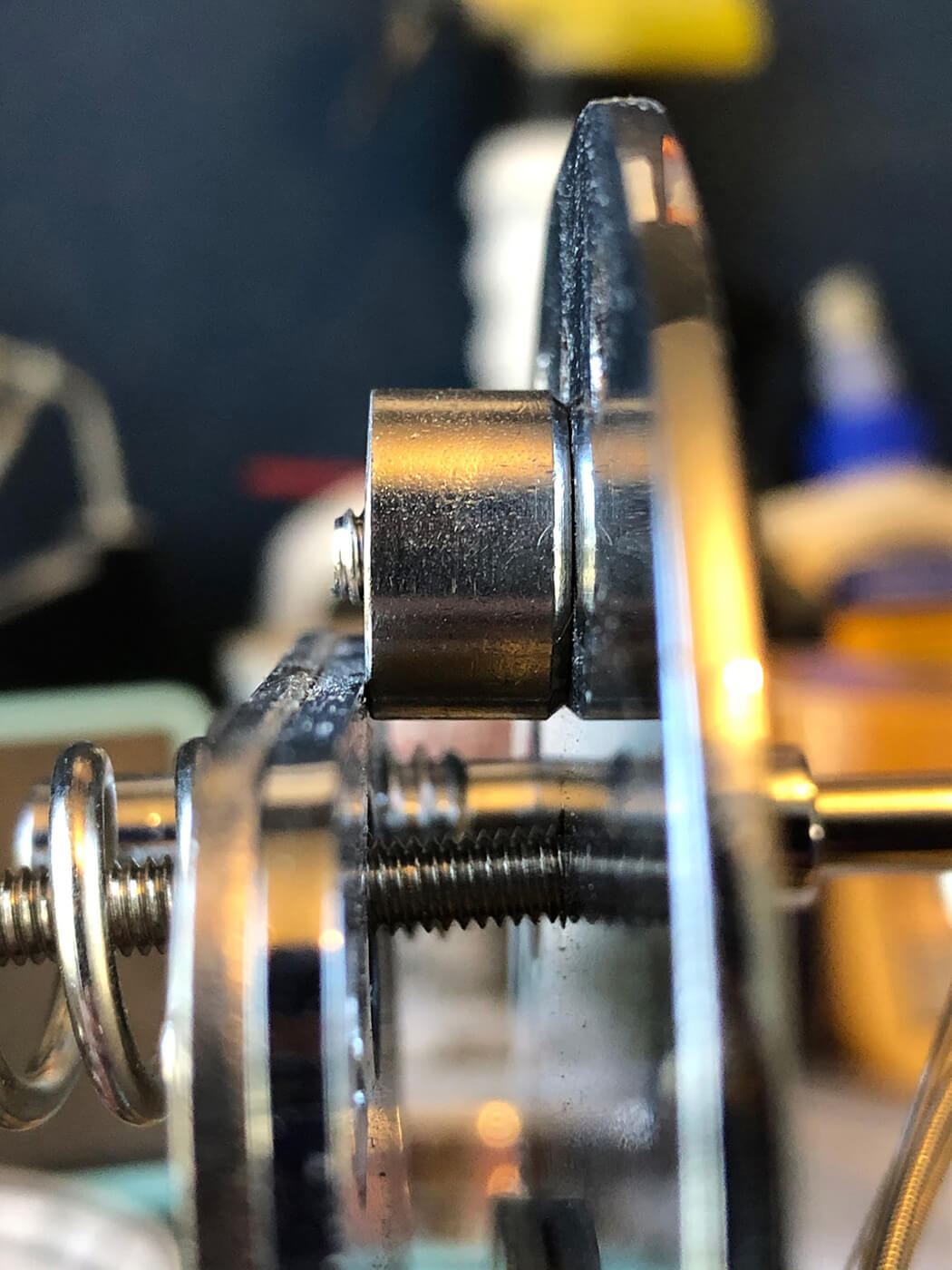
The fix? Simply flatten out one side of the slug! I chose to do this the old-fashioned way with a strip of 80 grit sandpaper and some elbow grease, but I would have been grateful for a belt sander. Thankfully, the job didn’t take all that long, and within 10 minutes I had it reinstalled with a dab of Loctite to ensure the button bolt held in place. Now it slides into place with minimal effort, and more importantly, stays put!
Strung up with a fresh set of Ernie Ball 11s, the Classic Player Jazzmaster played and sounded great. It’s always a pleasure getting a guitar like this into proper working order, and aside from the issues with the vibrato I spent some extra time cleaning the frets, conditioning the fretboard with a small amount of lemon oil, reducing neck relief, and setting intonation.
Upon pickup, the owner felt like they had a brand new guitar, which is something I like to hear. They plugged in, strummed a few chords, and lost themselves in the music for a moment, and friends, that’s reward enough for me!
For plenty more where this came from, follow Mike on Instagram: @puisheen.
